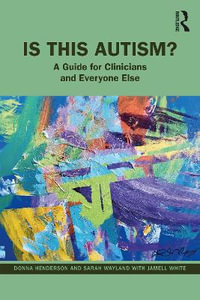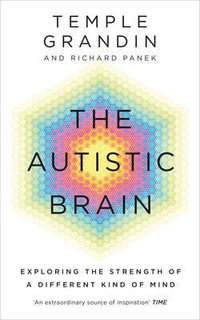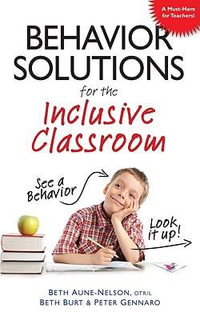| Current Understanding of Infant Learning and Autism | p. 1 |
| How Infants Learn | p. 2 |
| How Brain Development Supports the Acquisition of Social-Communicative Skills | p. 4 |
| How Autism Likely Affects Brain Development and Learning | p. 8 |
| Brain Changes in Early Childhood and Beyond | p. 12 |
| The Role of Early Intervention in Shaping Early Brain Development and Outcome in Autism | p. 13 |
| An Overview of the Early Start Denver Model | p. 14 |
| Foundations of the ESDM | p. 14 |
| The ESDM Curriculum | p. 17 |
| ESDM Teaching Procedures | p. 19 |
| Evidence of Effectiveness | p. 29 |
| Similarities and Differences between the ESDM and Other Intervention Models for Toddlers with ASD | p. 33 |
| Conclusion | p. 34 |
| Using the Early Start Denver Model | p. 35 |
| Delivery Settings | p. 35 |
| Delivery to Whom? | p. 36 |
| Delivery by Whom? | p. 36 |
| ESDM Procedures | p. 37 |
| Using the Generalist Model to Deliver Intervention | p. 39 |
| The Interdisciplinary Treatment Team | p. 40 |
| Partnering with Families | p. 50 |
| Transitioning Out of the ESDM Intervention | p. 55 |
| Conclusion | p. 57 |
| Developing Short-Term Learning Objectives | p. 58 |
| Assessment Using the ESDM Curriculum Checklist | p. 58 |
| Constructing the Learning Objectives | p. 68 |
| Balancing objectives across Domains | p. 68 |
| How Many Objectives? | p. 68 |
| Selecting Skill Content | p. 69 |
| Elements of the Objective | p. 70 |
| Writing Functional Objectives | p. 75 |
| Isaac's 12-Week Learning Objectives | p. 76 |
| Conclusion | p. 79 |
| Formulating Daily Teaching Targets and Tracking Progress | p. 80 |
| Mapping Out Learning Steps for Each Objective | p. 80 |
| Tracking Progress | p. 87 |
| Summary | p. 94 |
| Appendix 5.1. Learning Objectives and Learning Steps for Isaac | p. 95 |
| Developing Plans and Frames for Teaching | p. 101 |
| Becoming a Play Partner | p. 102 |
| Joint Activity Routines: Frames for Teaching | p. 108 |
| Managing Unwanted Behaviors | p. 120 |
| Organizing and Planning the Session | p. 123 |
| When Children Aren't Progressing: A Decision Tree | p. 130 |
| Conclusion | p. 134 |
| Developing Imitation and Play | p. 136 |
| Teaching Imitation | p. 136 |
| Teaching Play Skills | p. 146 |
| Conclusion | p. 153 |
| Developing Nonverbal Communication | p. 154 |
| Coordinating Attention Underlies Communication | p. 155 |
| Developing Use and Understanding of Natural Gestures | p. 156 |
| Teaching Conventional Gesture Use | p. 160 |
| Conclusion | p. 166 |
| Developing Verbal Communication | p. 168 |
| Stimulating Development of Speech Production | p. 169 |
| Receptive Language | p. 179 |
| Conclusion | p. 182 |
| Using the Early Start Denver Model in Group Settings | p. 184 |
| Considering Characteristics of Autism in Classroom Organization | p. 185 |
| Physical Organization | p. 186 |
| Planning the Daily Schedule and Routines | p. 189 |
| Choreography of the Classroom | p. 192 |
| Staff Planning and Communication | p. 192 |
| Small- and Large- Group Instruction | p. 194 |
| Classroom Behavior Management | p. 197 |
| Transitions and Individual Schedule Systems | p. 198 |
| Curriculum for Peer Relations and Self-Care | p. 202 |
| Kindergarten Transition | p. 206 |
| Conclusion | p. 207 |
| Early Start Denver Model Curriculum Checklist and Item Descriptions | p. 209 |
| Introduction | p. 209 |
| Administration | p. 210 |
| Scoring | p. 211 |
| Translating Items into Teaching Objectives | p. 211 |
| Materials Needed | p. 212 |
| Early Start Denver Model Curriculum Checklist for Young Children with Autism | p. 213 |
| Early Start Denver Model Curriculum Checklist: Item Descriptions | p. 230 |
| Early Start Denver Model Teaching Fidelity Rating System: Administration and Coding | p. 259 |
| Procedure for Coding Fidelity of Treatment Implementation | p. 259 |
| Early Start Denver Model | p. 261 |
| Early Start Denver Model Fidelity CodingSheet | p. 271 |
| References | p. 273 |
| Index | p. 287 |
| Table of Contents provided by Ingram. All Rights Reserved. |
























